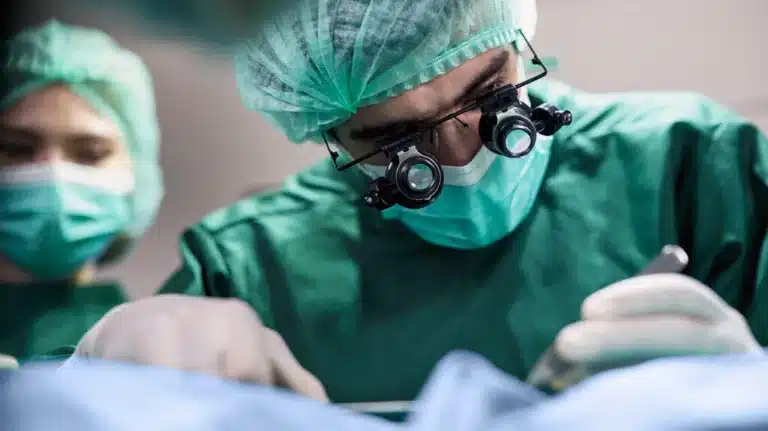What Are the Risks of Not Replacing Old Breast Implants?
Introduction
At the New York Liposuction Center, we understand that breast implants are a major decision and one that should not be taken lightly. Breast implants can provide many benefits to those looking for a more aesthetically pleasing figure and shape, but they also come with risks. This blog post will explore the risks associated with not replacing old breast implants, as well as offer advice on how to identify when your implants may need to be replaced. We hope this post will help you make an informed decision about whether or not to replace your old breast implants.
What Are Breast Implants?
Breast implants are medical devices used to enhance the size and shape of a woman’s breasts. They are most commonly made from silicone or saline, and come in different sizes, shapes, and textures. Implants can be placed above or below the chest muscle, and may be filled with either a cohesive gel or a saline solution.
Types of Breast Implants Available
The two main types of breast implants available are silicone and saline. silicone implants are filled with a semi-solid gel that is designed to feel similar to natural breast tissue. Saline implants are filled with a sterile saltwater solution that is safe for the body if it were to leak. Both types of implants have an outer shell made from silicone rubber that helps keep them in place once they are inserted into the body.
Reasons for Getting Breast Implants
Women may decide to get breast implants for many reasons, including improving their self-confidence, correcting asymmetry between their breasts, restoring volume lost due to weight changes or pregnancy, or reconstructing breasts after mastectomy surgery.
Risks Associated With Getting Breast Implants
Although breast augmentation surgery has become increasingly common over the years, there are still risks associated with getting breast implants. These risks include infection, scarring, changes in nipple sensation, implant rupture or deflation, and allergic reactions to the implant material itself. In some cases, women may also experience chronic pain or discomfort as a result of their implants.
Breast implants are medical devices used to enhance size and shape of woman’s breasts, made from silicone or saline, with risks associated.
How Long Do Breast Implants Last?
Breast implants have become increasingly popular in recent years, and many women are considering getting them for cosmetic or reconstructive purposes. But, one of the most important questions to ask before getting breast implants is: how long do they last? Knowing the average lifespan of different types of breast implants can help you make an informed decision about whether or not to get them.
Average Lifespan of Different Types of Breast Implants
The average lifespan of a breast implant depends on the type and quality of the implant used. Generally speaking, silicone gel implants last longer than saline implants. Silicone gel implants typically last between 10 and 15 years before needing to be replaced, while saline implants usually need to be replaced after 5 to 10 years. It’s important to note that these are just averages, and some people may need to replace their breast implants sooner or later than this depending on their individual circumstances.
Factors That Affect How Long a Breast Implant Will Last
There are several factors that can affect how long a breast implant will last, including the type and quality of the implant used, the person’s lifestyle habits (such as smoking), and their body chemistry (which can cause the implant to break down more quickly). Additionally, if the implant is placed incorrectly or if it is exposed to trauma or extreme temperatures, it could fail sooner than expected.
Signs That a Breast Implant Needs To Be Replaced
It’s important to watch out for signs that your breast implant may need to be replaced sooner than expected. If you experience any pain or discomfort around your breasts, notice any changes in shape or size, or have any other symptoms that seem unusual, you should contact your doctor right away for further evaluation. You should also keep up with regular check-ups with your doctor so they can monitor your implants for any signs of wear and tear over time.
|
Type of Implant
|
Average Lifespan
|
|
Silicone Gel
|
10-15 years
|
|
Saline
|
5-10 years
|
What Are the Risks of Not Replacing Old Breast Implants?
Breast implants can be a great way to improve one’s appearance and self-confidence, but they do come with certain risks. One of the most important considerations when it comes to breast implants is how long they last and when they need to be replaced. Failing to replace old breast implants can lead to a number of serious risks that could have long-term consequences.
Risk of Rupture and Leakage
One of the biggest risks associated with not replacing old breast implants is the risk of rupture and leakage. Over time, the outer shell of the implant can weaken and become more prone to damage or rupture. If this happens, the silicone gel inside may leak out into the surrounding tissue, leading to potential health complications. In some cases, women may experience symptoms such as pain, swelling, or tenderness in their breasts if an implant has ruptured or leaked.
Increased Risk of Infection and Inflammation
Another risk associated with not replacing old breast implants is an increased risk of infection and inflammation in the breasts or surrounding tissue. As time passes, bacteria and other microorganisms can accumulate on the surface of an implant, leading to potentially serious infections that require medical attention. In addition, older implants are more likely to cause inflammation due to their weakened structure and increased exposure to body fluids.
Implant Deflation and Wrinkling
If an old implant is not replaced in a timely manner, it may begin to deflate or wrinkle over time due to wear and tear on its outer shell. This can lead to changes in the shape or size of your breasts as well as discomfort or pain in your chest area. In some cases, deflation or wrinkling may require corrective surgery in order for you to achieve your desired results from your breast augmentation procedure.
Painful Symptoms Caused by Old Implants
In addition to physical changes in your breasts caused by old implants, you may also experience painful symptoms such as burning sensations or stabbing pains in your chest area that worsen over time if they are not replaced quickly enough. These symptoms can be caused by a variety of factors including infection, inflammation, scarring around the implant site, or even just general deterioration of the implant itself over time due to age and wear and tear on its outer shell.
Potential Need for Corrective Surgery
Finally, failing to replace old breast implants may result in a need for corrective surgery if any issues arise from them being left too long without being replaced. This could include anything from correcting deflation or wrinkling caused by aging implants to repairing ruptures or leaks that have occurred due to their weakened state over time. Depending on the severity of these issues, corrective surgery could involve anything from minor outpatient procedures all the way up to major reconstructive surgeries that require extensive recovery times afterwards.
Risks of not replacing old breast implants include rupture, leakage, infection, inflammation, deflation, wrinkling, painful symptoms and potential need for corrective surgery.
Conclusion
At the New York Liposuction Center, we understand the importance of replacing old breast implants. Not doing so can lead to a number of risks such as rupture and leakage, increased risk of infection and inflammation, implant deflation and wrinkling, painful symptoms, and potential need for corrective surgery. We always recommend that patients who have had breast implants for more than 10 years consult with our board-certified plastic surgeon Dr. Arnold Breitbart to assess the condition of their implants and determine whether or not they should be replaced. If you have any questions about breast implants or would like to schedule an appointment at either our Park Avenue or Manhasset locations, please do not hesitate to contact us.





